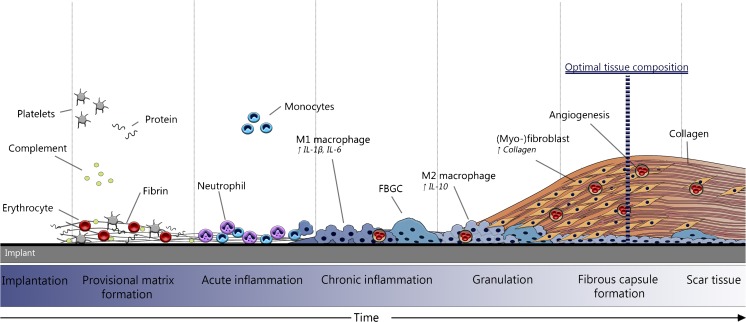Fig. 2.
An overview of the foreign body response. Following implantation a provisional matrix immediately forms around the implant. Following provisional matrix formation acute inflammation is mainly characterized by the presence of neutrophil, and some monocyte infiltration and differentiation. Chronic inflammation is characterized by the infiltration of monocytes that differentiate to macrophages, and neovascularization. Fibroblasts then proliferate and begin to produce ECM components including collagen. A fibrous capsule forms composed out of a (myo-)fibroblasts, ECM components (mainly collagen), and a one- to two-layer of macrophages. Over time scar tissue forms mainly composed of ECM and collagen, with less fibroblasts. The optimal tissue composition for use as TEBV is a thick cellularized fibrous capsule, which is collagen rich with relatively few inflammatory cells

